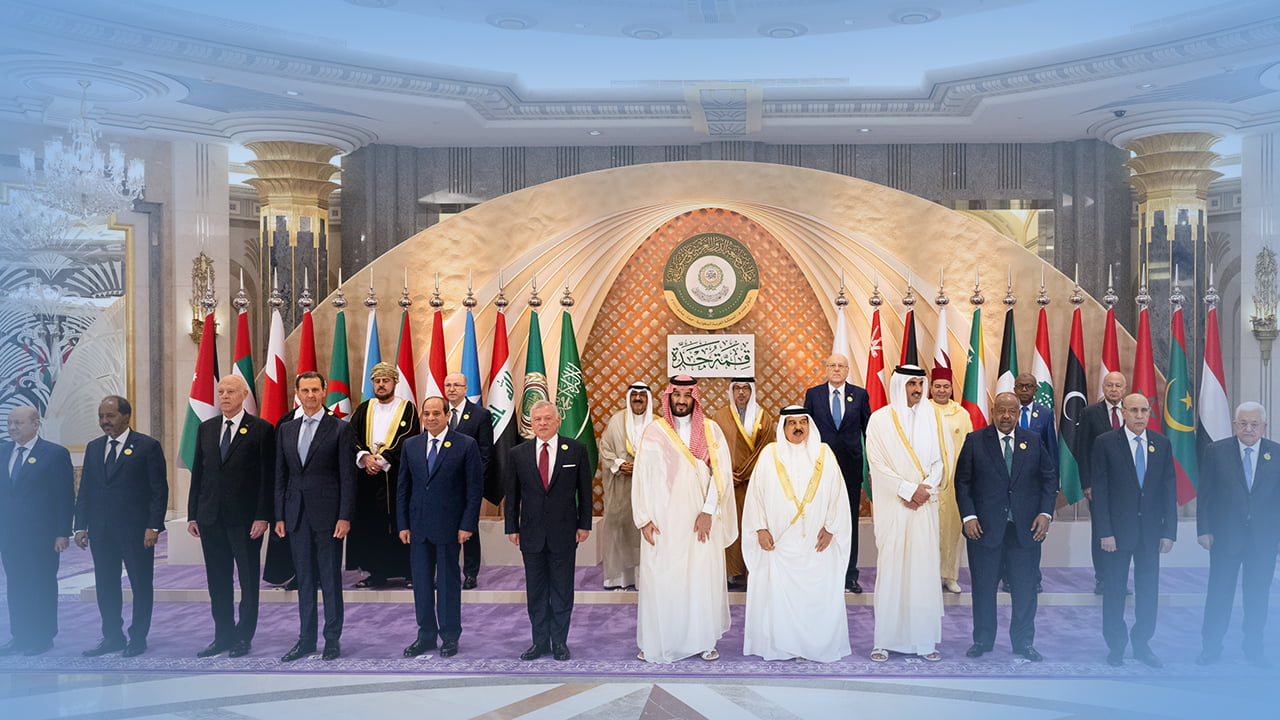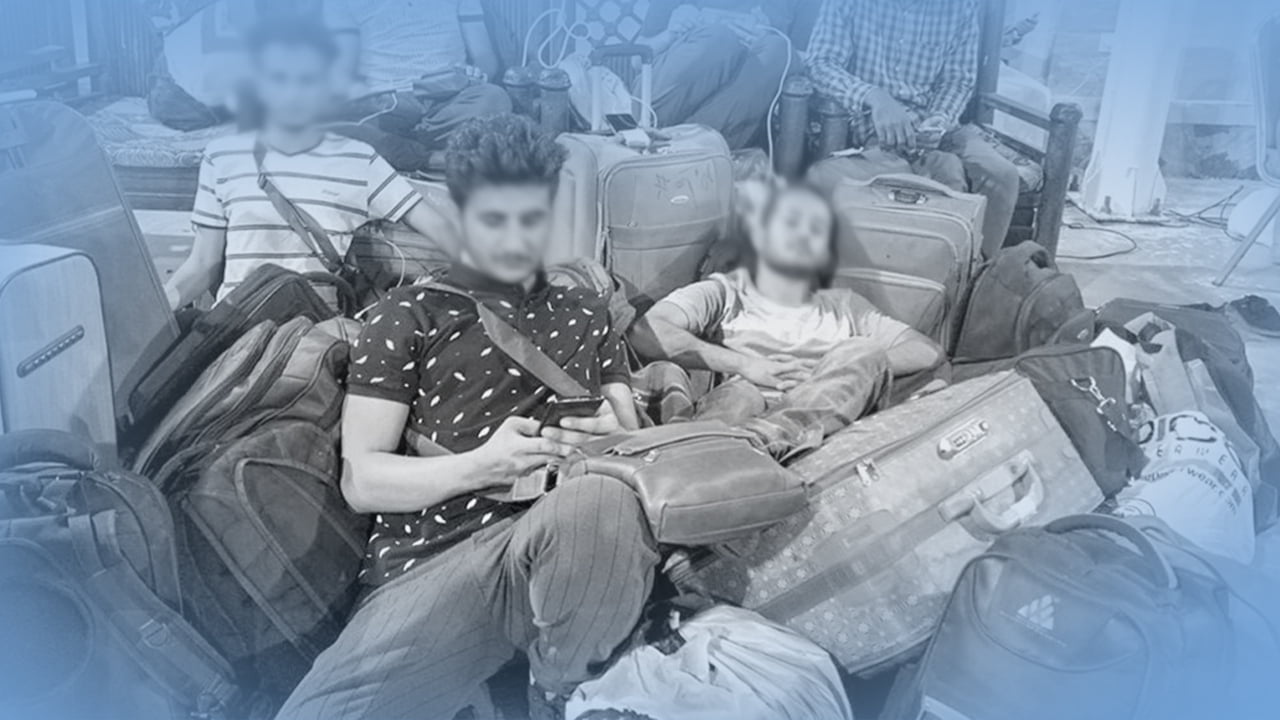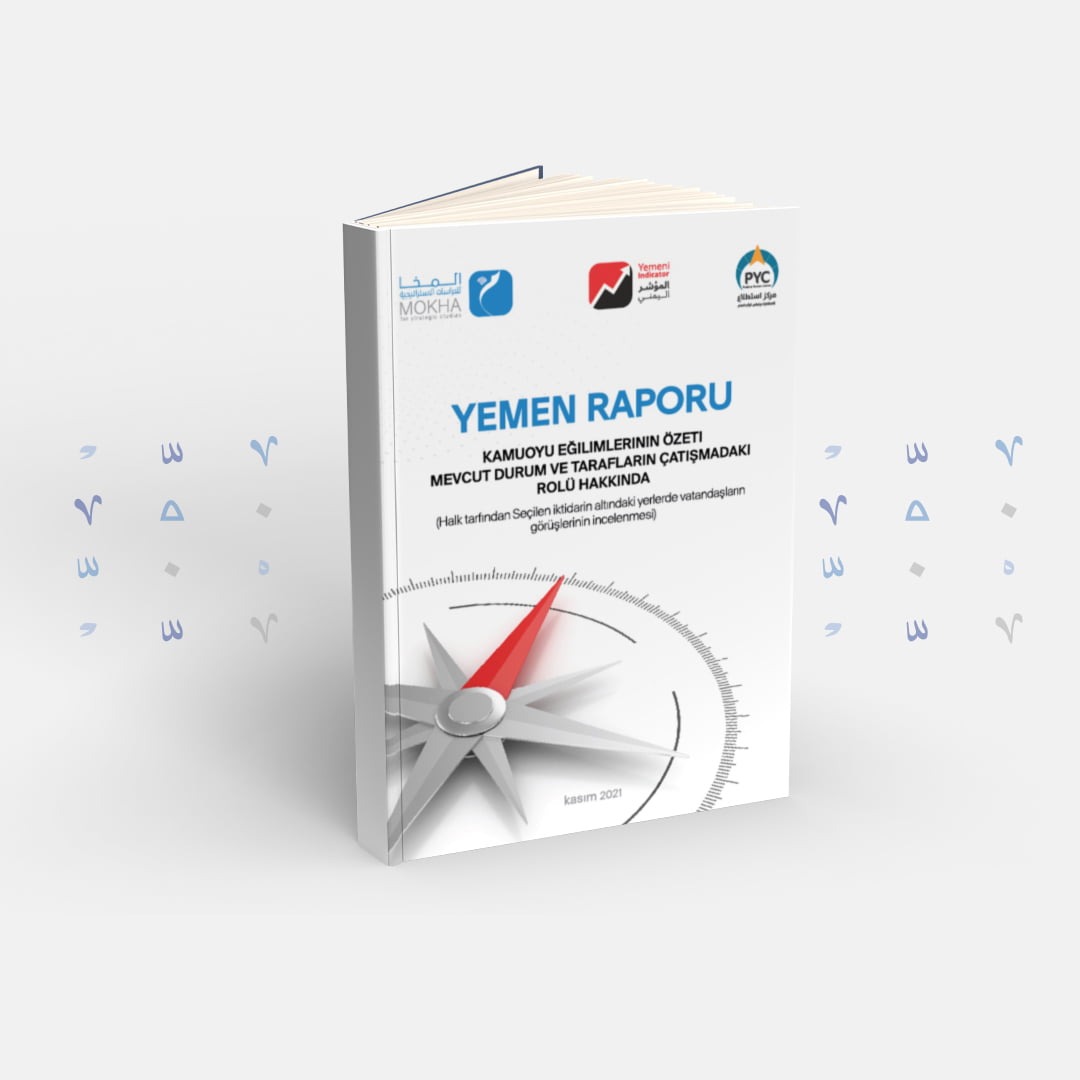The Jeddah Declaration: Between a pessimistic Yemeni vision and an optimistic one

| Getting your Trinity Audio player ready... |
The 32nd Arab summit was concluded in Jeddah, Saudi Arabia, with the wide participation of Arab leaders, along with the presence of Ukrainian President Zelensky. One of the most prominent events of the summit was the presence of the Syrian President, Bashar al-Assad, after a hiatus of more than 12 years. While the final statement of the summit — which was called the “Jeddah Declaration” — stipulated “stopping external interference in the internal affairs of Arab countries … and refusing to support the formation of armed groups and militias outside the scope of state institutions” 1, the reality says the opposite. In theory, there is direct support from some Arab regimes for armed groups outside state institutions, as is the case in Yemen.
In this paper, we review the statement of the Jeddah Summit on Yemen.
Between the Yemen project and Arab Leagues statement
The Republic of Yemen submitted a draft resolution containing 29 items. The draft resolution began with a commitment to the unity, sovereignty, safety and security of Yemeni territory, and the rejection of any interference in its internal affairs, as well as it ended with praising the recent visit of the Saudi delegation to Sana’a2. The summit adopted the resolution; however, the adoption does not indicate that the final statement of the summit agrees with it, as each country has the right to submit a decision where it’s usually adopted, and there is no disagreement about it, in many cases.
it is noted that the closing statement of the summit did not emphasize the term “unity” of the Republic of Yemen and only asserted the “support for everything that guarantees the security and stability of the Republic of Yemen, and fulfills the aspirations of the Yemeni people”3.
It is clear that the final statement of the summit is the most important for Yemen, at least, because of the direct influence of the host country on the course of events in Yemen, as the statement expresses the political position of the host country and Arab leaders, in general, toward the Yemeni crisis.
While the previous Arab summits emphasized, in all their closing statements, after the fall of Sana’a in the hands of the armed Houthi group in 2014, on preserving Yemen’s unity, territorial integrity and independence, the Jeddah Declaration completely abandoned the term “unity”. This shift in the summit statement can be understood in several possible contexts:
– The host country (Saudi Arabia) wishes to not anger the Southern Transitional Council, which is supported by the UAE, to gain it over to its side at a time when it wishes to be the one in control of the Yemeni scene and the actors in it.
– Saudi Arabia wants to send an implicit message to the Houthi group that it may support the option of secession if the Houthi continue to oppose Saudi efforts to end the war and move toward a political settlement.
– Saudi Arabia is seeking to put pressure on the pro-legitimacy parties by threatening the Yemeni unity to get more involved in achieving its agendas and surrendering to its decisions related to Yemen and not deviating from its plans and policies.
– Saudi Arabia is already heading toward separating the south and strengthening the side of the Southern Transitional Council, given that the Yemeni unity has become part of the Yemen crisis, which is an irreplaceable opportunity for the Saudi decision-maker to divide Yemen and return it to square one and a state of weakness.
Despite the intentions of Saudi Arabia, abandoning the unity of Yemen in the summit statement carries negative connotations. Regardless of the interpretations of this statement, the indications on the ground suggest that there are regional conflicts that are being liquidated at the expense of the Yemenis, their territorial integrity and the unity of their state.
It is true that the closing statement of the summit emphasized the Republic of Yemen, and the Republic of Yemen has one legal meaning, which is political Yemen. However, such a trend in the statements of the Arab League, which threatens Yemeni unity, does not serve regional security or international peace, but rather threatens the entity of the state in Yemen and allows armed groups to grow and spread, as well as adhere to their departure from the control of the state and their intransigence in their demands, including current separatist Transitional Council and the Houthi sectarian group.
Even though the closing statement of the summit highlighted the Republic of Yemen, such a trend in Arab League statements, which threatens Yemen’s unity, does not promote regional or international security, but rather threatens the state in Yemen and allows armed groups to grow and spread, and it threatens adherence to its departure from the control of the state and its intransigence in its demands, including the separatist transitional council and the sectarian Houthi group.
The implications of Al-Alimi’s speech at the Arab summit:
The speech of the Presidential Leadership Council’s president, Dr. Rashad Al-Alimi, at the Arab Summit on the economic situation, called on the members to intervene to support the Yemeni government and humanitarian intervention to save the lives of millions, as if the crisis in Yemen was humanitarian, not political, in the first place. He also affirmed the PLC’s adherence to the three terms of reference for the resumption of the political process.4
Al-Alimi did not present any clear political vision of how to deal with the situation in the south and east of the country, and, while he stressed the need to protect the unity of the Syrian lands, Al-Alimi could not clearly raise the issue of adherence to Yemen unity in his speech at the Arab summit.
His speech was consistent with the agendas of the Arab coalition, at a time when the unity of Yemen has become threatened as the Southern Transitional Council adopted the principle of political escalation — before the convening of the Arab summit — toward the secession by announcing the Southern National Charter and on the ground by extending in the province of Hadhramaut to the east, without any objection by the Arab Coalition or the Presidential Leadership Council.
Al-Alimi’s speech is considered repetitive and does not carry anything new. It is a clear indication that the PLC lacks a clear national vision, as a result of the division of its members and the multiplicity of their projects. Whereas part of the Council does not work on the principle of consensus but rather belongs to the secession project, and this team has become a large bloc in the Presidential Council, after the two members of the council, Faraj Al-Bahsani and Abu Zaraa Al-Mahrami, became part of the separatist Transitional Council.
The secession team in the Presidential Council enjoys full political, military and financial support from the UAE, where it controls the security and military scene in Aden and some of the southern governorates. Another part of the council revolves around Saudi politics so it maintains its silence regarding what is happening on the ground in the southern and eastern governorates, and the Saudi negotiations with the Houthi group are far from coordination with the Presidential Leadership Council and Yemeni decision-makers.
In general, in the view of some, Al-Alimi’s speech did not meet the aspirations of the Yemeni people regarding future steps toward the Houthi group in the event of a failure to reach a political solution or toward the Southern Transitional Council in the event that it tends to impose separation as a fait accompli through its military and political expansion in the areas that are supposed to be subject to the legitimate government, headed by the PLC.
This proposition is matched by a contradictory proposition, which does not see, in Al-Alimi’s speech, any prejudice to the issue of Yemen’s unity.
In his speech to the Yemeni people, on the 33rd anniversary of Yemeni unity, on May 22, 1990, on the issue of the south, and at the beginning of his speech, Al-Alimi stressed the deterioration of the Yemeni situation to the extent that it reached what he described as “fair entitlements for the partners in the south of the homeland”, describing the 1994 AD war as “a civil war, whose negative effects were recognized by the active political forces in the country”, in the comprehensive national dialogue conference. On the other hand, he referred to the southerners as “partners of the goal and decision in the south and north of the homeland, as one team, one nation, in order to restore the state, and move to a more participatory space, in which the Yemenis determine their future on the basis of coexistence, as they were and did so,” stressing the meanings of Unity in many expressions, including “at the heart of one man, common hopes and goals, and at every historical moment, the partners from the north and the south came together to bring about transformation, and we can do that now, because, without the union … we will all have to wait for the fate of our country, which is determined by foreign interventions Expansionism of the Iranian regime”, as well as directing — in his speech — all verses of veneration, glorification and appreciation to the heroes of the armed forces, security and popular resistance, for their stances and precious sacrifices, “in defense of constitutional legitimacy, the republican system and national unity”5.
Moreover, the Yemen draft resolution, submitted by the Yemeni government, to the Arab summit, included in its first article: “Commitment to Yemen’s unity, sovereignty, security, stability and territorial integrity and rejection of any interference in its internal affairs”. This is regardless of whether the closing statement of the Arab League includes the same words or not.
The fourth item of the statement emphasized unity implicitly, as it stated: “We reaffirm our support for everything that guarantees the security and stability of the Republic of Yemen, and achieves the aspirations of the brotherly Yemeni people, supporting international and regional efforts aimed at reaching a comprehensive political solution to the Yemeni crisis based on the three references represented in the Gulf initiative and its implementation mechanisms, the outputs of the Yemeni national dialogue, and Security Council Resolution No. 2216”6.
The coming days will reveal what the policy of the Presidential Leadership Council, and its successor, the Arab Coalition, led by Saudi Arabia, will lead to regarding the southern issue.
Consequences of the “Jeddah Declaration” on the course of the conflict in Yemen:
Some Yemeni forces fear a repeat of the Syrian scenario in Yemen, as Saudi Arabia has returned to recognizing the Syrian president, Bashar al-Assad, in light of its inability to remove him from the scene during the last period, embracing him at the Arab Summit as the sole and legitimate representative of the Syrian people, despite his destruction of Syria, his killing and the displacement of millions of Syrians, which may extend to the Yemeni situation in the north or south, and makes speculation about the Saudi position toward the conflict in Yemen open to all possibilities, including dealing with the status quo in the future, and recognizing the separatists and the Houthis. This will be a major challenge for the national forces.
The development in the closing statement of the Arab Summit was a negative indicator, where, at the local level, the Houthi group will use this loophole to show itself as the defender of Yemen’s unity, while the Southern Transitional Council will see the matter as a green light to complete its endeavors to impose secession as a fait accompli, especially since the Syrian president is trying to get rid of the legal references that emphasize the unity of Yemen.
Moreover, the summit statement did not directly explain the need to stop supporting separatist groups calling for secession and overlooked the UAE’s support for separatist groups in the south and east of the country.
The continued flow of arms and political and military support to the Yemeni parties, with the coup and separatist tendencies at home, will remain the touchstone for the coalition countries regarding the issue of preserving the unity, security, safety and stability of Yemen, as continuing to do so will enhance the state of internal division and lead to more chaos and disintegration of the Yemeni state.
References – The 32nd Arab Summit concludes its work by approving the “Jeddah Declaration”, Al-Jazeera, on 19/5/2023, link: https://cutt.us/nHjUG
– Decisions of the League of Arab States Council at the summit level, regular session (32), General Secretariat, League of Arab States, on 5/19/2023: pp. 52-61.
– “Jeddah Declaration”: Leaders of Arab countries stress the importance of strengthening joint Arab action based on foundations, values, common interests, and one destiny, Saudi Press Agency (SPA), on 19/5/2023, link: https://www. spa.gov.sa/68a3f8bca6a.
– Al-Alimi: We are confident that the Jeddah summit will represent an additional step for the path of joint Arab action. Sabq electronic newspaper, on May 19, 2023, available at the following link: https://sabq.org/saudia/60cacvh8au
-In a speech on the anniversary of May 22.. President Al-Alimi: Without the union, we will all have to wait for the fate of our country, which is determined by the expansionist interventions of the Iranian regime, Al-Masdar Online, on 5/22/2023, available at the following link: https://almasdaronline.com/articles/252153.
-”Jeddah Declaration”: The leaders of the Arab countries affirm…, The Saudi Press Agency (SPA), on 5/19/2023, previous reference.
– Decisions of the League of Arab States Council at the summit level, regular session (32), General Secretariat, League of Arab States, on 5/19/2023: pp. 52-61.
– “Jeddah Declaration”: Leaders of Arab countries stress the importance of strengthening joint Arab action based on foundations, values, common interests, and one destiny, Saudi Press Agency (SPA), on 19/5/2023, link: https://www. spa.gov.sa/68a3f8bca6a.
– Al-Alimi: We are confident that the Jeddah summit will represent an additional step for the path of joint Arab action. Sabq electronic newspaper, on May 19, 2023, available at the following link: https://sabq.org/saudia/60cacvh8au
-In a speech on the anniversary of May 22.. President Al-Alimi: Without the union, we will all have to wait for the fate of our country, which is determined by the expansionist interventions of the Iranian regime, Al-Masdar Online, on 5/22/2023, available at the following link: https://almasdaronline.com/articles/252153.
-”Jeddah Declaration”: The leaders of the Arab countries affirm…, The Saudi Press Agency (SPA), on 5/19/2023, previous reference.



